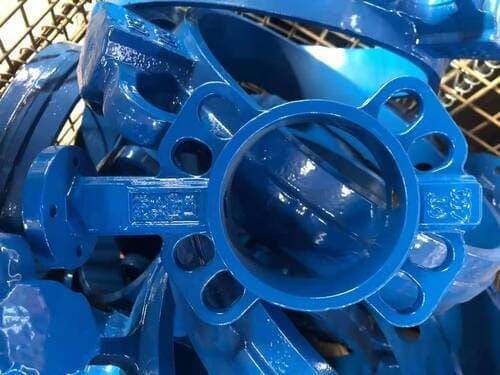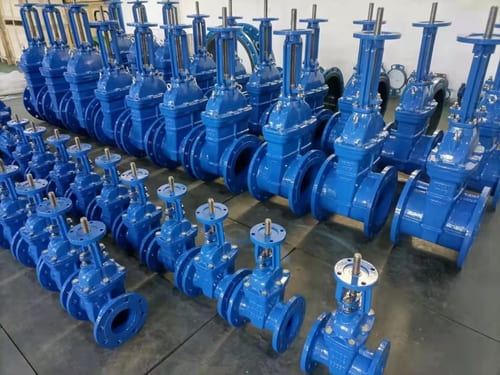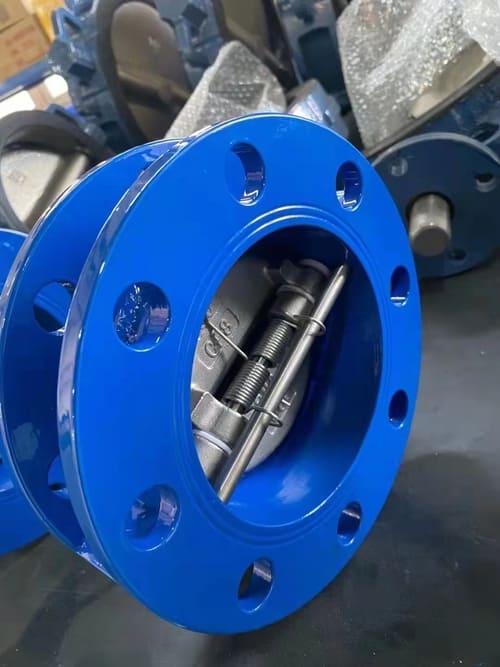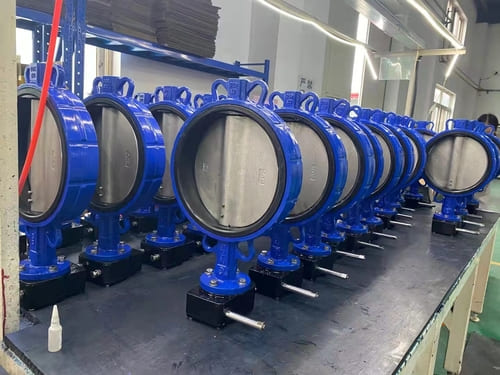Wafer butterfly valve is one of the most common types of valves in industrial pipelines. The wafer butterfly valve itself has a relatively small structure. You only need to put the butterfly valve in the middle of the flanges at both ends of the pipeline, and use stud bolts to pass through the pipeline flange and butterfly valve is locked to control the fluid medium in the pipeline. Wafer butterfly valve is especially suitable for places with narrow space or short distance between pipelines. When the butterfly valve is in the fully open position, the thickness of the butterfly plate is the only resistance when the medium flows through the valve body. Therefore, the pressure drop generated by the valve is very high. Small, so it has better flow control characteristics.

Instructions before installation of wafer butterfly valve:
1. Before installation and operation, use air spray to remove foreign objects on the piping, and clean the inner surface of the piping with clean water.
2. Carefully check whether the use of the valve is consistent with its performance specifications; (temperature, pressure)
3. Check whether there is debris on the valve passage and sealing surface, and remove it in time;
4. The valve must be installed in time after unpacking, please do not loosen any fastening screws or nuts on the valve at will;
5. Wafer butterfly valves must use special butterfly valve flanges.
6. The electric butterfly valve can be installed on the pipeline at any angle. For the convenience of maintenance, it is recommended not to install it upside down.
7. When installing the butterfly valve flange, it must be ensured that the flange surface and the sealing rubber are aligned, the screws are evenly tightened, and the sealing surface must be intact; if the screw tightening force is uneven, the rubber bumps will block the butterfly plate, or the top Staying on the butterfly plate causes leakage at the valve stem.
Precautions for valve installation:

1. When installing the valve, it is necessary to clean the inner cavity and the sealing surface, whether the connecting bolts are evenly tightened, and check whether the packing is tight.
2. The valve is closed during installation.
3. Large-size gate valves and pneumatic control valves should be installed vertically to avoid biasing one side due to the large weight of the valve core, which may cause leakage.
4. There is a set of correct installation process standards.
5. The valve should be installed in accordance with the allowable working position, but attention must be paid to the convenience of maintenance and operation.
6. The installation of the globe valve should make the flow direction of the medium consistent with the arrow marked on the valve body. For valves that are not frequently opened and closed but need to strictly ensure that they do not leak in the closed state, they can be installed in reverse to make them tightly closed with the help of the medium pressure. .
7. When tightening the compression screw, the valve should be in a slightly open state to avoid crushing the sealing surface of the valve top.
8. The cryogenic valve should be opened and closed as far as possible in the cold state before positioning, and it is required to be flexible and free from jamming.
9. The liquid valve should be configured such that the valve stem is at a 10° inclination angle with the horizontal to avoid liquid flowing out along the valve stem, and more serious, to avoid leakage.
10. After the large air separation tower is barely cooled, pre-tighten the connecting valve flange once in the cold state to prevent leakage at room temperature but low temperature.
11. It is strictly forbidden to use the valve stem as a scaffold to climb during installation.
12. After all valves are in place, they should be opened and closed again, and they are qualified if they are flexible and not stuck.
13. Valves should generally be positioned before pipeline installation. The piping should be natural, and the position should not be hard to pull, so as not to leave pre-stress.
14. Non-metal valves, some are hard and brittle, and some are low in strength. During operation, the opening and closing force should not be too large, especially hard. Also pay attention to avoid object bumps.
15. When transporting and installing the valve, beware of bumps and scratches.
16. When the new valve is used, the packing should not be too tight, and should not leak, so as to avoid too much pressure on the valve stem, accelerating wear, and strenuous opening and closing.
17. Before installing the valve, confirm that the valve meets the design requirements and relevant standards.
18. Before installing the valve, clean the inside of the pipeline to remove iron filings and other impurities to prevent foreign matter from being included in the valve sealing seat.
19. The high temperature valve is at normal temperature when installed. After use, the temperature rises, the bolt is heated to expand, and the gap increases, so it must be tightened again. This problem needs to be paid attention to, otherwise it is easy to leak.
20. When installing the valve, confirm whether the flow direction of the medium, the installation form and the position of the handwheel comply with the regulations.

The above is the installation instructions of the butterfly valve and the precautions when installing the valve. I hope it is helpful.

